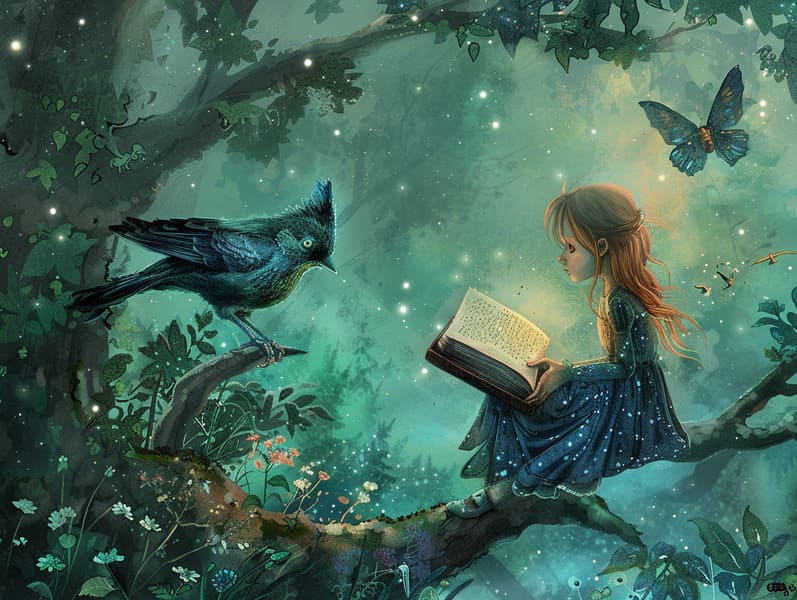The Emergence of Traditional Fairy Tales with the Ageless Appeal.
The Emergence of Traditional Fairy Tales with the Ageless Appeal.
Blog Article

Ancient fairy tales have long histories. These tales have been whispered from one generation to the next millennia before they were ever written down. They originated from a variety of backgrounds, including Middle Eastern traditions. They were initially told among adults, often carrying themes and messages reflective of the societal norms and beliefs of the time.
Jacob and Wilhelm Grimm, Jacob and Wilhelm Grimm, were among the first to assemble many of these beloved stories. Their compilation, "Grimm's Fairy Stories," included stories like "The Little Glass Slipper," "Hansel and Grethel," and "Little Snow White," which have since become mainstays in the world of beloved fairy tales. Similarly, H. C. Andersen's fanciful tales, such as "The Mermaid's Tale," and "The Duckling's Story," have gained the love worldwide, ensuring their place in the pantheon of timeless fairy tales.
Though they are old, traditional fairy tales remain as relevant as ever, especially as children's night stories. These whimsical stories are now available in multiple formats, including beautifully illustrated books, whimsical animations, and internet fairy tales.
Their enduring popularity can be traced to several captivating elements:
Crucial Morals: Old fairy tales often share important moral lessons. Stories like "The Boy Who Cried Wolf" teach the virtue of truth, while "The Tortoise and the Hare" show the merits of resolve and humility. These stories offer young ones clear distinctions between right and wrong, helping to shape their moral compass in a tender yet impactful way.
Sympathy and Perception: Timeless fairy tales frequently depict protagonists facing challenges and struggles, motivating kids to feel with their struggles and champion their triumphs. For instance, "Beauty and the Beast" points out the importance of looking past the exterior to realize the inner being of a person, building understanding and knowledge.
Cultural Awareness: Many fairy tales are infused with the cultural contexts from which they emerged. Reading these fairy tales can provide illuminating insights into different heritages, building a sense of global awareness and acknowledgment.
Creativity and Imagination: The imaginative elements in old fairy tales—mythical entities—enhance children’s dreams. These tales take readers to otherworldly realms, provoking imaginative dreams and a sense of magic that endures a lifetime.
Classic fairy tales are not only delightful but also didactic. They provide whimsical tools in fostering various mind and heart abilities in the young. When traditional fairy tales are voiced, they boost communication skills by more info teaching new vocabulary and sophisticated sentence structures. This practice also improves listening skills and attentiveness, as young ones listen intently, anxious to see what happens next.
Furthermore, debating the themes and characters of fairy tales can strengthen logical thinking and thought processes. Little ones are guided to identify patterns, anticipate outcomes, and know cause and effect. These contemplations also promote kids express their thoughts and feelings, enhancing their emotional intelligence.
In today’s online age, the abundance of digital fairy tales has made these stories more reachable than ever. Online platforms and digital apps extend wide arrays of children's fairy tales that can be experienced or listened through anytime, anywhere. Fairy tales read aloud are particularly well-liked, presenting an entertaining method for young readers to delight in these charming stories. Audio stories and read-to-me stories move characters and settings to life, often enhanced by magical melodies and instrumentals that boost the story adventure.
The timeless charm of timeless fairy tales lies in their ability to transform to modern society while retaining their central values. Contemporary reinterpretations of these stories often present more inclusive protagonists and modern settings, making them meaningful to today’s audience. However, the key lessons of guts, benevolence, and justness remain unchanged, continuing to influence readers of all ages.
Old fairy tales also offer a sense of solace and recognition. They supply a tidy narrative with a apparent beginning, middle, and end, often drawing to a close with the culmination of conflicts and the triumph of virtue over vice. This assuredness can be calming for young readers, proffering a sense of unchangeability in an unpredictable world.
Classic fairy tales continue to entrance and guide new generations, maintaining their grandeur and relevance in modern society. As bedtime stories for kids, they afford a perfect blend of captivation and insight, facilitating moral values, empathy, and creativity. The accessibility of digital storybooks and the well-received status of fairy tales told out loud ratify that these classic narratives remain available to new generations.
By sustaining and making known these narratives, we continue to value the rich tapestry of legends and cultural heritage. Whether you are enjoying a colorful picture book, experiencing a web-based collection, or listening via an audiobook, the majesty of bedtime fairy tales is always within reach. These narratives reveal of the eternal essence of narratives and its ability to draw us together across epochs and places.
If you are perusing a artistically illustrated book, browsing a digital collection, or playing an spoken story, the elegance of traditional fairy tales is always within reach.
These stories reveal of the ageless force of narratives and its ability to unite us across eras and regions, making a tie that fascinates and enlightens alike.